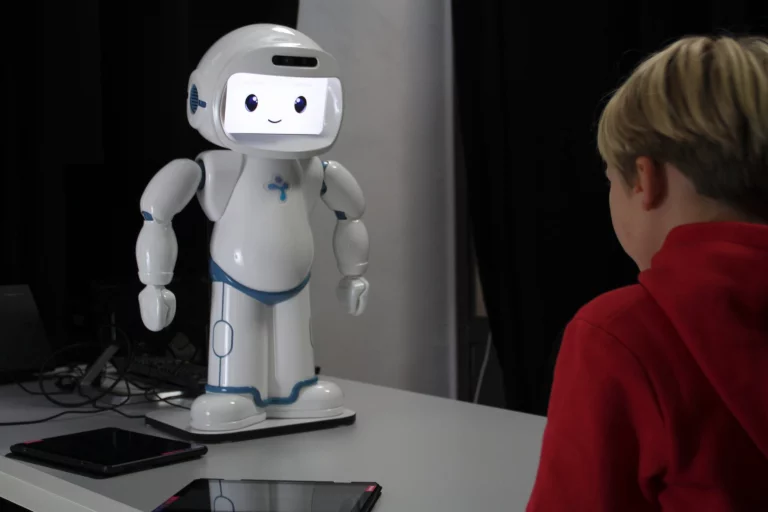Social Robotics
What is Social Robotics?
Robotics is an interdisciplinary field combining computer science and engineering to design, build, operate, and apply robots. Social robotics specifically focuses on creating machines that assist and interact with humans in diverse ways – ranging from automating routine tasks to mimicking complex human behaviors.
Robots are developed to address a wide array of needs and purposes, often tailored to perform specific tasks traditionally carried out by humans. Increasingly, artificial intelligence is integrated into robotic systems to enable adaptive decision-making and enhance their autonomous capabilities – allowing robots to respond flexibly to dynamic environments and social contexts.
Implications
Robots have a wide range of applications across nearly every sector, positioning them as a key technology for the future. It is anticipated that robots will become increasingly prevalent in diverse environments – extending beyond traditional manufacturing into healthcare, hospitality, restaurants, and even transportation.
For instance, one of our projects, funded by the Federal Ministry of Education and Research, involves developing a robotic learning assistant for children with autism spectrum disorder (ASD). Research has demonstrated that individuals with ASD often show heightened interest in technology and respond more positively to interactions with computers and tablets than with other humans.
Robotics technology thus offers a promising alternative treatment modality for people with ASD, combining affordability, user-friendliness, and broad accessibility. This example underscores the potential of robots to serve as versatile, supportive tools across a range of specialized applications.
Benefits
Robotics technology has demonstrated significant value as a supplemental tool across various sectors, extending far beyond its traditional role in manufacturing. In healthcare, for example, robotics has become an effective complement to address shortages of medical personnel and enhance service delivery.
Looking ahead, robotics holds promise for enabling flexible, efficient, and cost-effective treatment approaches that are both user-friendly and widely accessible. Such advancements have the potential to democratize healthcare, making high-quality interventions available to a broader population.


